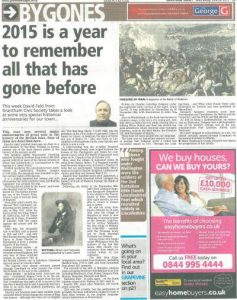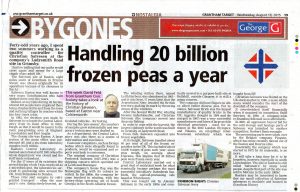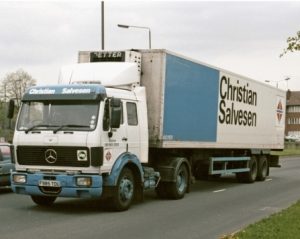This is the third and final article which I wrote for the Grantham Target in 2015. It’s actually only half of the original, because the second half, covering Lincoln to the outfall at the Wash was omitted. I never did discover who bisected it, nor why. Anyway, this is the whole:
The historic county of Lincolnshire is largely surrounded by water.
To the west, the River Trent rises between Leek in Staffordshire and Congleton in Cheshire, flows eastwards and then northwards, including through Newark and Gainsborough – and meets up with the River Yorkshire Ouse at Trent Falls to form the Humber estuary. The Humber and the Trent form the northern, and much of the western, boundaries of Lincolnshire, respectively.
To the south, the River Welland, rises near Sibbertoft in Northamptonshire and flows meanderingly north- eastwards through Market Harborough, Stamford (there forming a part of the boundary with Cambridgeshire), Crowland and Spalding. It merges with three other great rivers, the Great Ouse, the Nene and our own Witham, to form the estuary called The Wash which, with the North Sea coast, gives the east of Lincolnshire its distinctive shape.
Granthamians are most familiar with the river which lends so much to Grantham’s visual heritage: the Witham. It rises south of Grantham, a few miles west of South Witham – originally ‘Wytham’. Like that of nearby Wymondham on the River Eye (or ‘Wye’; later the River Wreake, a tributary of Leicester’s River Soar), the name is almost certainly derived from its river – or ēa, in Old English. Ham is an Old English suffix meaning ‘settlement’.
The River Witham flows northwards, little more than a stream, and can be seen easily at School Lane in Colsterworth. After this it passes under the A1, flows through land attached to Easton Hall, under the pretty humpbacked bridges at Easton Lane and at Great Ponton – then through the grounds of Little Ponton Hall.
New Somerby is where the now quite substantial Witham enters Grantham (there’s –ham again!). This is also where the town’s imminent, so-called southern by-pass, from the Somerby Hill roundabout towards the A1, will be carried over the Witham valley by a high-level bridge.
In the town, the river’s first easy visual access is at the pool at the picturesque Spittlegate watermill which faces the bottom of Harrowby Road. A few yards on, it passes under the Bridge End Road bridge, the first of several viewpoints in Grantham. Later views are had from the bridges at St Catherine’s Road and Avenue Road; from the well-known ‘White Bridge’ in Wyndham Park, where it meets the culverted end of the Mowbeck (whose source is at Harlaxton) coming under the town from the west; and lastly from the Belton Lane bridge.
The higher ground between the Witham to the east, and the Mowbeck to the west and north, was where the Saxon settlement of Grantham grew up. The water supply enabled the wool-, and later leather, trades to flourish in mediaeval, and early modern, Grantham. Two watermills which provided flour for bread-making were driven by the River Witham.
A riverside footpath now links the Bridge End Road and Belton Lane bridges, initially on alternating sides of the Witham, before leaving it at the weir-footbridge in Queen Elizabeth Park for Manthorpe Road. This stretch of river is looked after by Grantham Rivercare, which is led by fellow Civic Society committee member, John Knowles.
Once past the back of Manthorpe old village, and near to Londonthorpe Mill, the Witham is joined by the Withambrook, a substantial stream which hasn’t come far from its source near Harrowby Hall via Alma Park.
On the north edge of Grantham, the Witham forms a very attractive setting in Belton House grounds and Belton village. Perhaps the last places in the Grantham area from which it can be seen easily are Marston Hall (home to the late Henry Thorold, the historian who wrote so much about Lincolnshire) and Marston village. For three miles at Claypole, it forms the boundary between Lincolnshire and Nottinghamshire. South of Lincoln, the Witham meanders through numerous small villages – including Aubourn, where it forms a superb background to the Hall’s famous rose gardens. It then enters the city from due south.
From North Hykeham, the Witham runs parallel to, and west of, Lincoln’s High Street (B1262), northwards. In the city centre it meets the Roman-built Fossdyke Navigation (coming due west from the River Trent at Torksey) and forms the picturesque Brayford Pool. From here, it swings sharply eastwards through the ‘Glory Hole’ underneath the famous High Bridge (which dates from Norman times), after which it is navigable. In mediaeval times, the ability to import goods up-river, and for goods made in Lincoln to be exported through Boston, benefitted both settlements.
In times of very high water, the ‘Glory Hole’ is unable to take the volume, and the excess is diverted away from the city by the Sincil Dyke (later, South Delph) to rejoin the river near Bardney. The Witham passes under the Lindum Road before heading away from Lincoln.
The mooted Lincoln eastern by-pass will cross the Witham between Washingborough on the south bank (where the river swings southeastwards) and Cherry Willingham on the north. Until that time, the next crossing-point is still the iron bridge at Bardney (built in 1893-4 on the B1202), which is overlooked by the village’s sugar-beet factory.
After it passes Southrey and Kirkstead, the Witham (now a major watercourse) crosses, still southeastwards, vast swathes of drained fenland. Before Tattershall Bridge, it is joined in quick succession by Timberland Delph (from the west), the Horncastle Canal (east) and Billinghay Skirth (west). At Tattershall Bridge itself, where the elegant old brick pack-bridge is almost hidden, the by-now high-banked Witham passes under the ‘new’ A153 road-bridge – and this is a great place to sit and watch it saunter elegantly past!
Close to the Battle of Britain memorial Flight, the Witham is joined by the River Bain from the north, just before it splits Dogdyke village. A mile later, at Chapel Hill, it is joined from the west by Kyme Eau, which Sleafordians know as the continuation of their River Slea. From here to Langrick, the Witham was straightened in 1833.
Our river flows under Langrick’s steel bridge (built on the B1192 in 1909) towards Boston. It passes under the Skegness railway and through the Grand Sluice; then enters Boston proper under the magnificent new St Botolph’s footbridge and the famous Town Bridge (all overlooked by the Boston ‘Stump’) and, lastly, the Haven Bridge on the A16.
Just after the Haven Swingbridge, the Witham, now called the Haven, is joined by the South Forty-Foot Drain (or Black Sluice Navigation; from the west) and by the Maud Foster Drain (from the north). Lastly, the Hobhole Drain joins from the north, just before the river makes its grand exit into the westernmost point of The Wash. It has done this for a thousand years: the outflow was originally at the extinct village of Drayton, now part of Skirbeck, until in 1014, heavy flooding forced a route-change.
Between South Witham and The Wash, the River Witham ambles and saunters for 82-miles. Curiously, in that journey, it moves only 30 miles eastwards from Grantham – but includes a 52-mile detour!
In a second article on the River Witham in Grantham and surrounds, I hope to give an account of the natural heritage and wildlife of the river.


